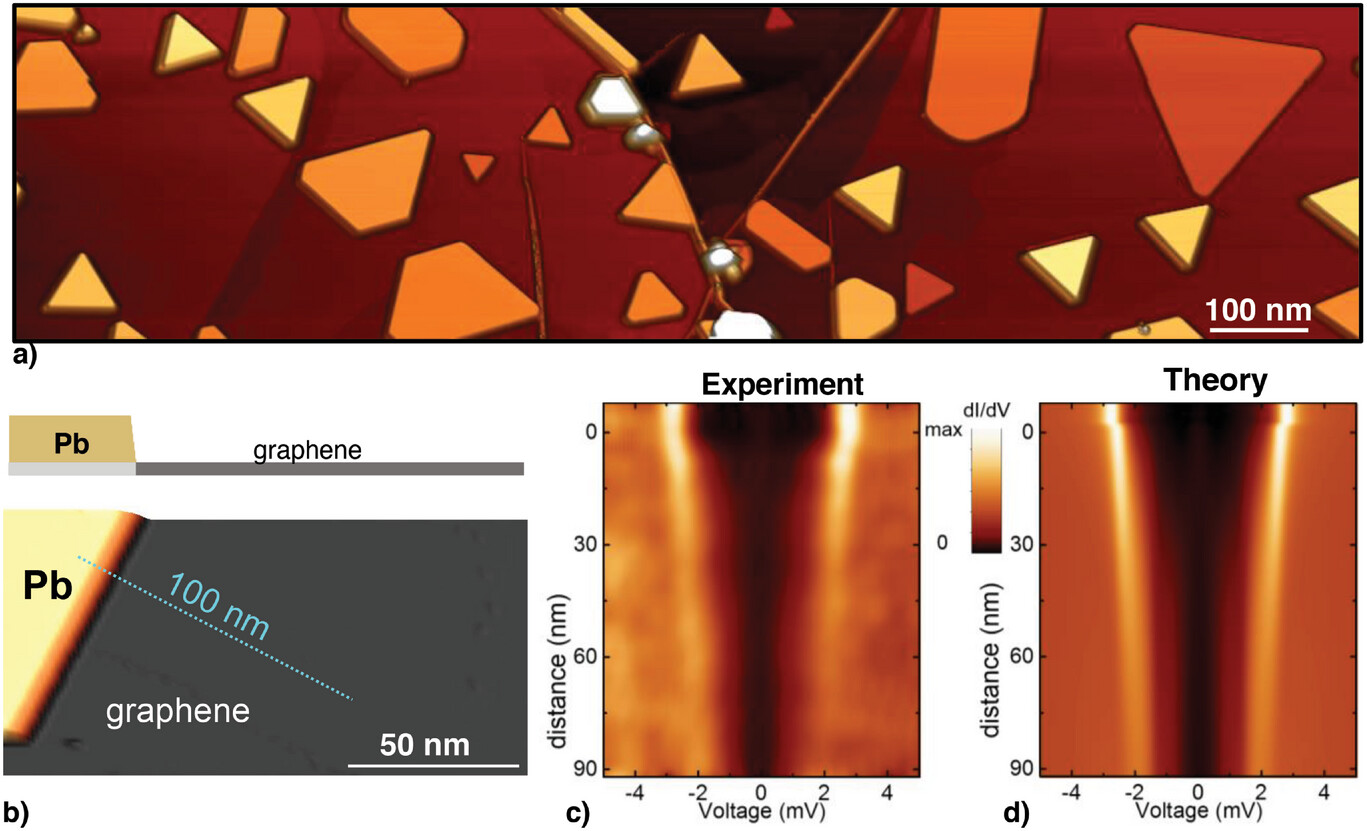Shaping graphene superconductivity
20/12/23 12:39
Graphene holds great potential for superconductivity due to its pure 2D nature, the ability to tune its carrier density through electrostatic gating, and its unique, relativistic-like electronic properties. At present, still far from controlling and understanding graphene superconductivity, mainly because the selective introduction of superconducting properties to graphene is experimentally very challenging. Here, a method is developed that enables shaping at will graphene superconductivity through a precise control of graphene-superconductor junctions. The method combines the proximity effect with scanning tunnelling microscope (STM) manipulation capabilities. Pb nano-islands are first grown that locally induce superconductivity in graphene. Using a STM, Pb nano-islands can be selectively displaced, over different types of graphene surfaces, with nanometre scale precision, in any direction, over distances of hundreds of nanometres. This opens an exciting playground where a large number of predefined graphene-superconductor hybrid structures can be investigated with atomic scale precision. To illustrate the potential, a series of experiments are performed, rationalized by the quasi-classical theory of superconductivity, going from the fundamental understanding of superconductor-graphene-superconductor heterostructures to the construction of superconductor nanocorrals, further used as “portable” experimental probes of local magnetic moments in graphene.


